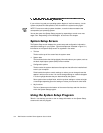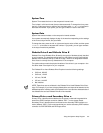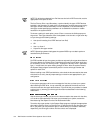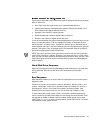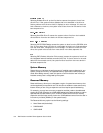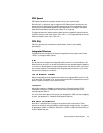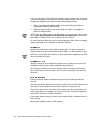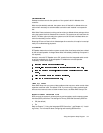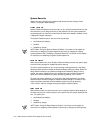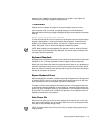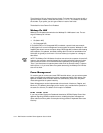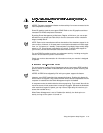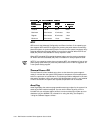
3-10 Dell Precision 610 Mini Tower Systems User’s Guide
If you set a serial port to Auto and add an expansion card containing a port configured
to the same designation, the system automatically remaps the built-in port to the next
available port designation that shares the same IRQ setting as follows:
COM1 (input/output [I/O] address 3F8h), which shares IRQ4 with COM3, is
remapped to COM3 (I/O address 3E8h).
COM2 (I/O address 2F8h), which shares IRQ3 with COM4, is remapped to
COM4 (I/O address 2E8h).
NOTE: When two COM ports share an IRQ setting, you can use either port as neces-
sary, but
you may not be able to use them both at the same time
. If the second
port (COM3 or COM4) is also in use, the built-in port is turned off.
For more information about built-in ports, port designations, IRQs, and the remapping
of ports, see Appendix B, “Hardware Configuration Features.”
Parallel Port configures the system’s built-in parallel port. This option can be set to
378h
(the default), to alternate addresses 278h
or 3BCh, or to Off to disable the port.
NOTE: Do not set Parallel Port to 278h if you have an Extended Capabilities Port (ECP)
device connected to the port.
Parallel Port Mode controls whether the system’s built-in parallel port acts as an AT-
compatible (unidirectional) or PS/2-compatible (bidirectional) port.
Set this option according to the type of peripheral device connected to the parallel
port. To determine the correct mode to use, see the documentation that came with
the device.
IDE Drive Interface enables or disables the system’s built-in EIDE hard-disk drive
interface.
With Auto (the default) selected, the system turns off the built-in EIDE interface when
necessary to accommodate a controller card installed in an expansion slot.
As part of the boot routine, the system first checks for a primary hard-disk drive con-
troller card installed in an expansion slot. If no card is found, the system enables the
built-in EIDE interface to use IRQ14 and IRQ15.
If the system detects a primary controller on the expansion bus, it disables the built-in
EIDE interface.
Selecting Off disables the built-in EIDE interface.



